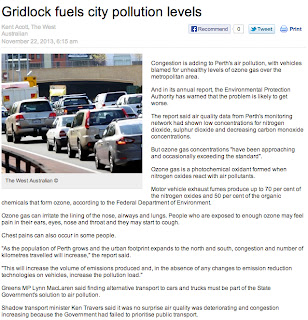It is of some concern, therefore, that newly-released population forecasts for Perth are substantially higher than those used as the basis for Directions 2031, the major strategic planning guidance for Perth.
 |
| Directions 2031 |
The new forecasts from the Australian Bureau of Statistics show a range of 2.7 - 3.1 million (+12.5% on Directions 2031) for 2031 and 3.9 - 5.4 million (+15% to +50% on Directions 2031) by 2050.
 |
| Australian Bureau of Statistics |
Such a large increase in medium-term and long-term population expectations does not simply mean that current plans can be accelerated. All development, including transport infrastructure, has a long lead time, which means the acceleration required is effectively even more rapid than the population forecasts imply.
Acceleration will also mean that there is a great temptation to rely more heavily on the 'easy' fixes - those that can be accelerated most readily - rather than those that are more suitable for growth but are more difficult to implement quickly.
Directions 2031 sets a target of 47% of new dwellings to be created as infill in existing developed areas. This was a reduction from 60% from the previous Network City. Any further reduction, even in the short-term, to accommodate more rapid growth would increase distances people have to travel and add to congestion and the cost of travel.
More fundamentally, forecasts of a larger-than-previously-anticipated population growth for Perth raises the question of whether such a size and rate of growth is desirable and, if not, how it can be influenced.
In transport, predict-and-provide is increasingly being replaced by demand-management, but one of the prime determinants of travel demand, population, is still regarded as a given. Perhaps it is time for both land use and transport planning to consider Perth's population growth as something to be influenced rather than as a given that is beyond our control.








